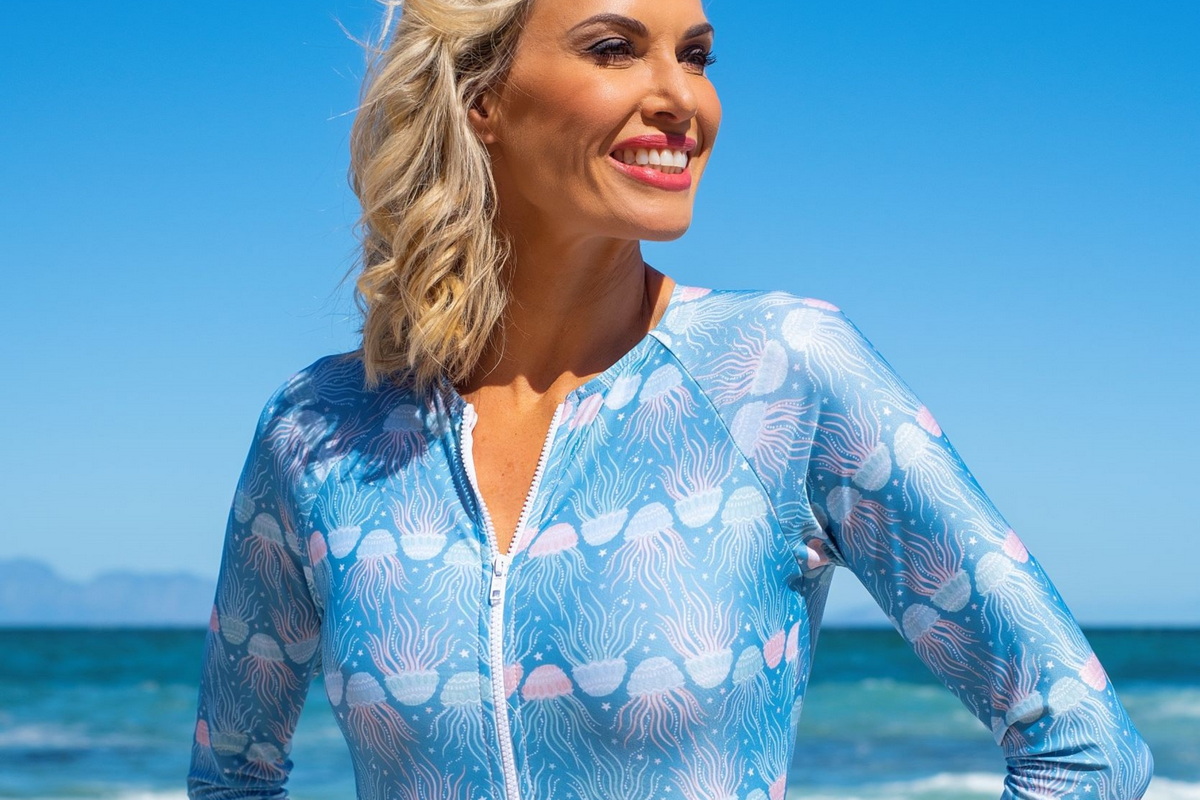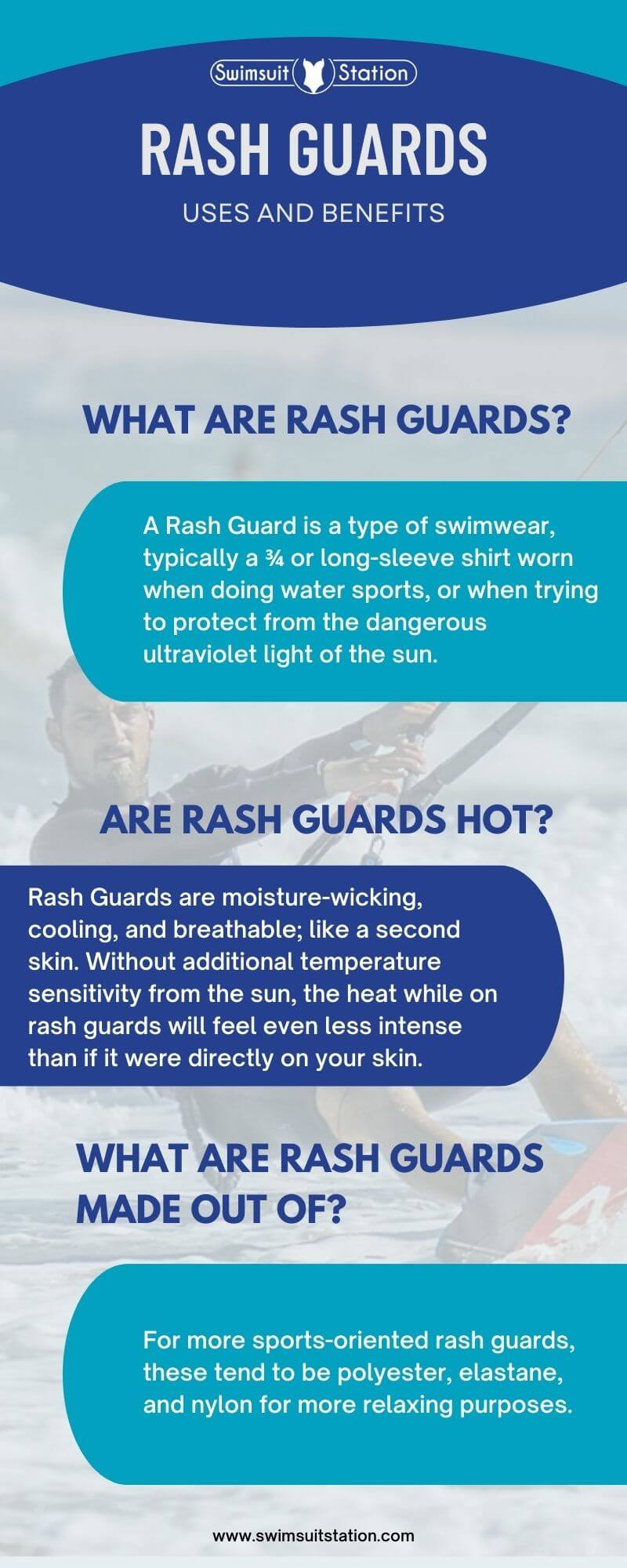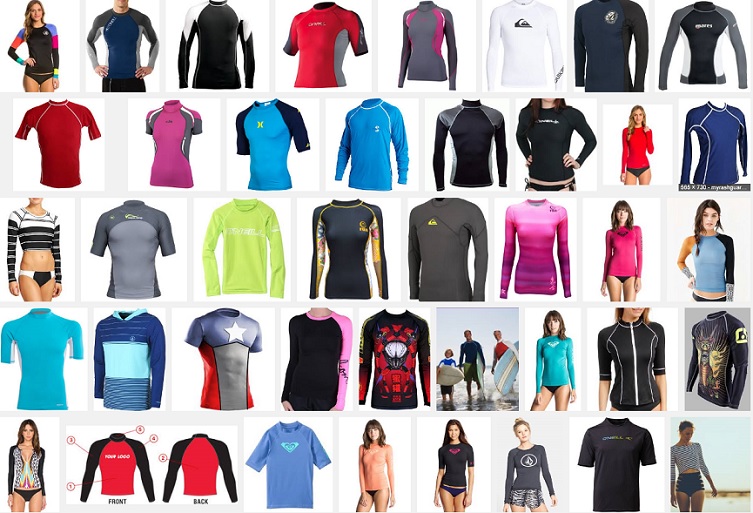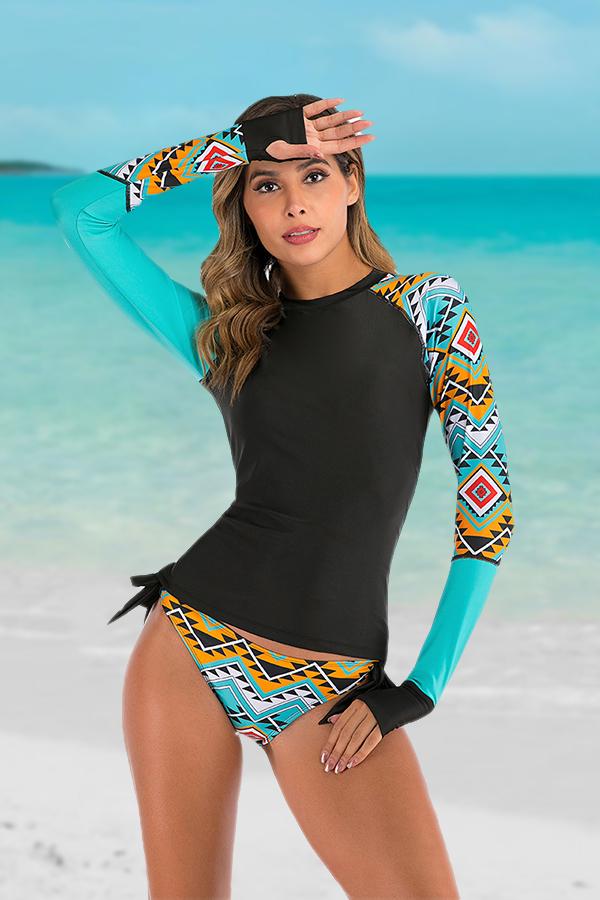Content Menu
● History of Rashguard Swimwear
● Benefits of Rashguard Swimwear
● Materials and Styles
● Choosing the Right Rashguard
● Popular Uses of Rashguard Swimwear
● Performance Enhancement with Rashguards
● Care Instructions for Rashguards
● Fashion Trends in Rashguard Swimwear
● Conclusion
● Frequently Asked Questions
>> 1. What is the primary purpose of a rashguard?
>> 2. What materials are commonly used in rashguards?
>> 3. How do rashguards provide UV protection?
>> 4. Can rashguards be used for activities other than surfing?
>> 5. What should you consider when choosing a rashguard?
● Citations:
Rashguard swimwear, commonly known as rash guards, is a specialized type of athletic shirt designed primarily for water sports and beach activities. Made from materials such as spandex, nylon, or polyester, these garments serve multiple purposes, including protection against rashes caused by abrasion, sunburn from prolonged sun exposure, and even stings from marine creatures like jellyfish. Originally developed for surfers in Australia, rash guards have gained popularity among various water enthusiasts due to their versatility and protective features.

History of Rashguard Swimwear
The concept of rash guards emerged in the late 1970s when surfers sought protection from the harsh sun and the abrasions caused by surfboards. The original designs were simple, focusing on providing a lightweight layer that could be worn comfortably in the water. Over the years, advancements in fabric technology have led to the development of high-performance materials that offer UV protection and quick-drying capabilities.
Benefits of Rashguard Swimwear
Rashguards provide numerous advantages, making them essential for anyone participating in water activities:
- UV Protection: Many rash guards are made with UPF-rated fabrics that block harmful ultraviolet rays, significantly reducing the risk of sunburn.
- Rash Prevention: The snug fit of a rash guard helps prevent chafing and irritation caused by friction with surfboards or other equipment.
- Thermal Insulation: While not as warm as wetsuits, rash guards can provide an extra layer of warmth in cooler waters.
- Comfort and Flexibility: Made from stretchy materials, rash guards allow for a full range of motion during physical activities.
Materials and Styles
Modern rash guards are typically constructed from a blend of synthetic materials like poly-elastane. This combination results in a stretchy, durable fabric that dries quickly and is resistant to chlorine damage. Rash guards come in various styles to suit different preferences:
- Long-Sleeve: Provides maximum coverage and protection against UV rays and abrasions.
- Short-Sleeve: Offers breathability while still providing some level of protection.
- Sleeveless: Ideal for those who prefer more freedom of movement or are engaging in high-intensity activities.
- Thermal Rash Guards: These are thicker options designed for colder water conditions, often made from neoprene to provide insulation while still allowing flexibility.

Choosing the Right Rashguard
When selecting a rash guard, consider the following factors:
- Fit: A snug fit is crucial for effective protection and comfort. Look for options that feature flatlock stitching to minimize chafing.
- Material: Choose a fabric that offers both stretch and durability. UPF ratings are essential for sun protection.
- Intended Use: Select a style based on your activity—long sleeves for surfing or snorkeling, short sleeves for beach volleyball or swimming.
Popular Uses of Rashguard Swimwear
Rashguards are not limited to surfing; they are widely used across various water sports and activities:
- Swimming: Provides an extra layer of protection against pool chemicals and sun exposure.
- Snorkeling: Helps prevent stings from jellyfish and abrasions from coral reefs.
- Martial Arts: Used in Brazilian Jiu-Jitsu (BJJ) to protect against mat burns and provide compression during training sessions.
- Other Sports: Rashguards are increasingly popular in sports like running, cycling, hiking, and even combat sports due to their moisture-wicking properties and muscle support features.
Performance Enhancement with Rashguards
Rashguards enhance athletic performance through several key features:
- Temperature Regulation: The breathable materials help regulate body temperature during intense activities, preventing overheating.
- Muscle Compression: Many rash guards offer compression benefits which improve blood circulation. Enhanced circulation leads to better oxygen delivery to muscles, improving performance and recovery times.
- Flexibility and Range of Motion: The stretchy material allows for unrestricted movement essential in sports requiring agility.

Care Instructions for Rashguards
To ensure longevity and maintain performance, proper care of rashguards is crucial:
1. Rinse Immediately After Use: Rinse your rash guard with cool fresh water immediately after wearing it to remove saltwater or chlorine residues that can degrade the fabric over time.
2. Gentle Washing: Hand wash using cool or lukewarm water with biodegradable soap. Avoid hot water as it can damage the fibers.
3. Drying Techniques: Air dry away from direct sunlight. Never use a dryer as heat can ruin the elasticity of the fabric.
4. Storage Tips: Store on a padded hanger or lay flat to avoid creases that can weaken the material over time. Avoid folding them as this can cause permanent damage.
5. Avoid Harsh Chemicals: Keep your rash guard away from bleach or harsh detergents which can deteriorate the fabric quality.
Fashion Trends in Rashguard Swimwear
Rashguards have evolved not only functionally but also stylistically. Various designs now cater to fashion-conscious consumers:
- Colorful Patterns and Prints: From tropical florals to geometric designs, there is a wide array of options available that allow individuals to express their personal style while staying protected.
- Flattering Cuts for Women: Many brands offer fitted silhouettes that enhance body shape without compromising comfort.
- Versatile Styles: Options such as zip-up rash guards provide ease of wear while maintaining functionality during active pursuits at the beach or poolside.
Conclusion
Rashguard swimwear is an indispensable piece of gear for anyone who enjoys spending time in the water. With its protective features combined with comfort and style, it caters to a wide range of water sports enthusiasts. Whether you're surfing the waves or lounging on the beach, a rash guard can enhance your experience while keeping you safe from the elements.

Frequently Asked Questions
1. What is the primary purpose of a rashguard?
- The primary purpose of a rashguard is to protect the skin from rashes caused by abrasion and to provide UV protection.
2. What materials are commonly used in rashguards?
- Rashguards are commonly made from spandex, nylon, or polyester, which are stretchy, durable, and quick-drying.
3. How do rashguards provide UV protection?
- Rashguards are often made with UPF-rated materials that block harmful UV rays, protecting the skin during sun exposure.
4. Can rashguards be used for activities other than surfing?
- Yes, rashguards are versatile and can be used for swimming, snorkeling, martial arts like Brazilian Jiu-Jitsu (BJJ), running, cycling, hiking, and more.
5. What should you consider when choosing a rashguard?
- When choosing a rashguard, consider fit (snug vs loose), material (stretchy and durable), style (long sleeve vs short sleeve), and intended use (specific sport or activity).
Citations:
[1] https://www.boardcave.com.au/information/rash-guard-guide
[2] https://battlegend.com/blogs/tips/how-rash-guards-enhance-performance-in-various-sports
[3] https://www.swimoutlet.com/blogs/guides/how-to-care-for-rashguards
[4] https://attracosports.com/collections/rash-guard
[5] https://www.billabong.com/blogs/expert-guides/womens-rashguard
[6] https://hugesports.com/blogs/insider-advice/do-i-need-a-rash-guard
[7] https://www.dasflow.com/blogs/the-proper-care-of-rash-guards
[8] https://www.carvedesigns.com/collections/rashguards-sunshirts
[9] https://roxy-uk.co.uk/expert-guide/surf/buying-guide/how-to-choose-rashguard.html
[10] https://www.hayabusafight.com/blogs/community/why-wear-rash-guards-in-combat-sports





































